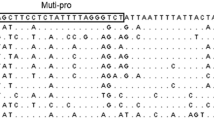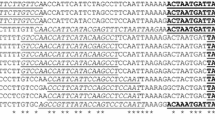Abstract
In Europe, edible insects are not a part of a common diet. But according to the Food and Agriculture Organization of the united nations (FAO), animal protein from insects could be an ecological, economic and healthy addition to human diets. In the EU there are currently no regulations on insects as food for human consumption. The production and sales of products containing insects are not prohibited. Several companies are producing and marketing food products containing insects already. In Switzerland, the recently revised food law allows and regulates insect production and products for human consumption. Like other ingredients, such food additives, insects have to be labeled correctly. To enforce such labeling, food control laboratories need analytical tools to detect insect ingredients and determine their species and quantity. We, therefore, developed a multiplex real-time PCR method detecting insect DNA generally and the three approved species specifically. The performance of this multiplex real-time PCR method was assessed during validation including data from other laboratories. These results indicate that the method is fit for purpose.

Similar content being viewed by others
References
Kambhampati S, Smith PT (1995) PCR primers for the amplification of four insect mitochondrial gene fragments. Insect Mol Biol 4(4):233–236
Ji Y-J, Zhang D-X, He L-J (2003) Evolutionary conservation and versatility of a new set of primers for amplifying the ribosomal internal transcribed spacer regions in insects and other invertebrates. Mol Ecol Notes 3:581–585
Pons J, Barraclough TG, Gomez-Zurita J, Cardoso A, Duran DP, Hazell S, Vogler AP (2006) Sequence-based species delimitation for the DNA taxonomy of undescribed insects. Syst Biol 55(4):595–609
Cognato AI (2006) Standard percent DNA sequence difference for insects does not predict species boundaries. J Econ Entomol 99(4):1037–1045
Caterino MS, Cho S, Sperling FAH (2000) The current state of insect molecular systematics: a thriving tower of babel. Annu Rev Entomol 45:1–54
Hebert PD, Cywinska A, Ball SL (2003) Biological identifications through DNA barcodes. Proc R Soc Lond B Biol Sci, 270(1512), 313–321
Hebert PD, Gregory TR (2005) The promise of DNA barcoding for taxonomy. Syst Biol 54(5):852–859
Park DS, Suh SJ, Hebert PDN, Oh HW, Hong KJ (2011) DNA barcodes for two scale insect families, mealybugs (Hemiptera: Pseudococcidae) and armored scales (Hemiptera: Diaspididae). Bull Entomol Res 101:429–434
Van Hiel MB, Van Wielendaele P, Temmerman L, Van Soest S, Vuerinckx K, Huybrechts R, Simonet G (2009) Identification and validation of housekeeping genes in brains of the desert locust Schistocerca gregaria under different developmental conditions. BMC Mol Biol 10(1):56
Xue JL, Salem TZ, Turney CM, Cheng XW (2010) Strategy of the use of 28S rRNA as a housekeeping gene in real-time quantitative PCR analysis of gene transcription in insect cells infected by viruses. J Virol Methods 163(2):210–215
Majerowicz D, Alves-Bezerra M, Logullo R, Fonseca-de-Souza AL, Meyer-Fernandes JR, Braz GRC, Gondim KC (2011) Looking for reference genes for real-time quantitative PCR experiments in Rhodnius prolixus (Hemiptera: Reduviidae). Insect Mol Biol 20(6):713–722
Teng X, Zhang Z, He G, Yang L, Li F (2012) Validation of reference genes for quantitative expression analysis by real-time RT-PCR in four lepidopteran insects. J Insect Sci 12(60):1–17
Reim T, Thamm M, Rolke D, Blenau W, Scheiner R (2013) Suitability of three common reference genes for quantitative real-time PCR in honey bees. Apidologie 44(3):342–350
Yang C, Pan H, Liu Y, Zhou X (2014) Selection of reference genes for expression analysis using quantitative real-time PCR in the pea aphid, Acyrthosiphon pisum (Harris)(Hemiptera, Aphidiae). PloS One, 9(11), e110454
Zhou X, Li Y, Liu S, Yang Q, Su X, Zhou L, Huang Q (2013) Ultra-deep sequencing enables high-fidelity recovery of biodiversity for bulk arthropod samples without PCR amplification. Gigascience 2(1):4
Morf NV, Wood KL, Köppel R, Felderer N, Daniels M, Tenger B, Kratzer A (2013) A multiplex PCR method to identify bushmeat species in wildlife; forensics Forensic Sci Int Genet Suppl Ser, 4, 1, e202–e203
Herbert PD, Cywinska A, Ball SL, de Waard JR (2003) Biological identifications through DNA barcodes Proc Biol Sci 270 (1512) 313–321
Acknowledgements
We thank the Food Control Authority of the Canton Zürich for providing the resources for this work.
Author information
Authors and Affiliations
Corresponding author
Ethics declarations
Conflict of interest
The authors declare that they have no conflict of interest.
Compliance with ethics requirements
This article does not contain any studies with human or mammalian subjects.
Additional information
Publisher’s Note
Springer Nature remains neutral with regard to jurisdictional claims in published maps and institutional affiliations.
Appendix: Illustrations and Tables 1, 2, 3, 4, 5, 6 and 7
Appendix: Illustrations and Tables 1, 2, 3, 4, 5, 6 and 7
Tetraplex real-time PCR system AllInsect
The primer Ins3.2F can also be used for sequencing of amplicons of the unspecific system
The primers Ins3.2F/R, Ins3.1R and Ins3.3R were designed on a fusion sequence of KX771130.1 KY883616.1 KX053394.1 and KX431795.1 to cover a broad range of insects (mismatches in capital letters):
ataccaatc  ctagtac gattaatatt aggagctccc gatatagcat tcctcgact aaataatata ccattttgac ttctcccacg atctttgtct atcttaatta taggtcttta taaagaagga gcacga
ctagtac gattaatatt aggagctccc gatatagcat tcctcgact aaataatata ccattttgac ttctcccacg atctttgtct atcttaatta taggtcttta taaagaagga gcacga  tctttccc tcgaataaat aatatgagat tttgattatt gattccatca ttatttttat taattttaag atctataatt aatattggtg taggnactgg gtgaactgtt tatcctcctt tatcattaaa tataagtcat agaggaatat cagttgattt agctattttt tctttacata ttgctggagt atcct
tctttccc tcgaataaat aatatgagat tttgattatt gattccatca ttatttttat taattttaag atctataatt aatattggtg taggnactgg gtgaactgtt tatcctcctt tatcattaaa tataagtcat agaggaatat cagttgattt agctattttt tctttacata ttgctggagt atcct  att
att
The primers Alph F/R for Alphitobius diaperinus were added to cover this species as it is used to produce insect proteins.
Location in the genome of KR052883 cytochrome oxidase I, position 178–356:
gttccta  ttagcaactc ttcatggcac tcaactaaat tatagaccct cccttctgtg agctttagga tttgtattcc tattcacagt aggaggatta accggagtag tattagcaaa ctcatcaatt gatattatat tacat
ttagcaactc ttcatggcac tcaactaaat tatagaccct cccttctgtg agctttagga tttgtattcc tattcacagt aggaggatta accggagtag tattagcaaa ctcatcaatt gatattatat tacat  cacttccattatgt
cacttccattatgt
Achaeta domestica | ||||
|---|---|---|---|---|
Primer/probe | Final conc. µM | Sequence | Amplicon | Source/GenBank acc.no./labelling |
Ache4.1F | 0.8 | GGT TAT ACC AAT TAT AAT TGG TGG | 125 bp | This work |
Ache4.1R | 0.8 | GGG TTA GTG AGG GTG GTA AAA GTC | ||
Ache2Joe | 0.08 | GGT GCA CCC GAT ATA GCC TTT CCT CG | Joe/BHQ1 | |
Location in the genome of KR919588 Cytochrome oxidase I cytochrome oxidase I, position 159–284
121 atcgtaactgcacatgcatttgtcataatttttttcat  attcggaaattgattagtacccctaatatta
attcggaaattgattagtacccctaatatta  aataaacaatataagatttt
aataaacaatataagatttt  ttttattaaccagaaga 301
ttttattaaccagaaga 301
Tenebrio molitor | ||||
|---|---|---|---|---|
Primer/probe | Final conc. µM | Sequence | Amplicon | Source/GenBank acc.no./labelling |
Tene2F | 0.6 | CCA TGA GTA CGA ATA AGA GAA ACC | 156 bp | This work |
Tene2R | 0.6 | GCT TGA ATT TGT TGT TTT ATC TG | ||
TeneRox | 0.08 | AAT AGA TAG ACC AAG AAC GCC TTC ACA | Rox/BHQ2 | |
Location in the genome of KP994554 NADH dehydrogenase subunit 4L, position 9477–9533
9361 ttgaaaataa tcgttt  aa
aa  aactctaaaag ttaaaaaaat tatagaaaaa aaataatctc ttcccaaata agataaataa ataaaaagaa cataataaa
aactctaaaag ttaaaaaaat tatagaaaaa aaataatctc ttcccaaata agataaataa ataaaaagaa cataataaa  cttaaaag 9541
cttaaaag 9541
Locusta migratoria | ||||
|---|---|---|---|---|
Primer/probe | Final conc. µM | Sequence | Amplicon | Source/GenBank acc.no./labelling |
Locu4.2F | 0.6 | CTG TAT TTT ATA TTC GGG GCA TG | 120 bp | This work |
Locu4.4R | 0.6 | GAT TAC ATT ATA TAC TTG ATC ATC G | ||
Locu3Cy5 | 0.08 | TTG TTC CTG GTT GAC CTA ATT CAG CTC GAA | Cy5/BHQ2 | |
Location in the genome of KM362655 cytochrome oxidase I, position 5-124
1 taca  agctggaatagtaggaacatcaataagaataattattcgagct
agctggaatagtaggaacatcaataagaataattattcgagct  taattaa
taattaa  attacagcacacgcat 141
attacagcacacgcat 141
Rights and permissions
About this article
Cite this article
Köppel, R., Schum, R., Habermacher, M. et al. Multiplex real-time PCR for the detection of insect DNA and determination of contents of Tenebrio molitor, Locusta migratoria and Achaeta domestica in food. Eur Food Res Technol 245, 559–567 (2019). https://doi.org/10.1007/s00217-018-03225-5
Received:
Accepted:
Published:
Issue Date:
DOI: https://doi.org/10.1007/s00217-018-03225-5




